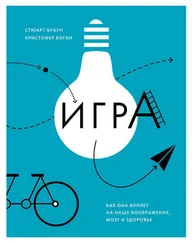De Gelder, B., De Haan, E.H.F., and Heywood, C.A. (2001), Out of mind: Varieties of unconscious processes. London: Oxford University Press. Cavaco, S., et al. (2004), ‘The scope of preserved procedural memory in amnesia’, Brain, 127 (8): 1853–1867.
Liikkanen L. (2012), ‘Musical Activities Predispose to Involuntary Musical Imagery’, Psychology of Music, 40 (2), 236–256.
Brown, S. (2006), ‘The perceptual music track: The phenomenon of constant musical imagery’, Journal of Consciousness studies , 13 (6), 25–44.
Sacks, O. (2007), Musicophilia: Tales of music and the brain. New York: Alfred A. Knopf.
Kellaris, J.J. (2008), ‘Music and consumers’, in C.P. Haugtvedt, P. Herr and F.R. Kardes (eds.), Handbook of consumer psychology (pp. 837–856). New York: Taylor & Francis.
Levitin, D.J. (2006), This is your brain on music. New York: Dutton.
Halpern, A.R., and Bartlett, J.C. (2011), ‘The persistence of musical memories: A descriptive study of earworms’, Music Perception, 28 (4), 425–443. Beaman, C.P., and Williams, T.I. (2010), ‘Earworms (stuck song syndrome): Towards a natural history of intrusive thoughts’, British Journal of Psychology, 101 (4), 637–653.
Williamson, V.J., and Jilka, S.R. (2013), ‘Experiencing earworms: An interview study of Involuntary Musical Imagery’, Psychology of Music, DOI: 10.1177/0305735613483848.
Müllensiefen, D., et al., ‘Individual differences in spontaneous involuntary musical imagery’, Music Perception (in press 2013).
Wammes, M., and Barušs, I. (2009), ‘Characteristics of spontaneous musical imagery’, Journal of Consciousness Studies, 16 (1), 37–61.
Floridou, G., Williamson, V.J., and Müllensiefen, D. (2012), ‘Contracting earworms: The roles of personality and musicality’, in E. Cambouropoulos, C. Tsougras, K. Mavromatis, K. Pastiadis (eds.), Proceedings of ICMPC-ESCOM 12 (Thessaloniki, Greece), 302–310.
Williamson, V.J., and Müllensiefen, D. (2012), ‘Earworms from three angles’, in E. Cambouropoulos, C. Tsougras, K. Mavromatis, K. Pastiadis (eds.), Proceedings of ICMPC-ESCOM 12 (Thessaloniki, Greece), 1124–1133.
Williamson, V.J., et al. (2012), ‘How do earworms start? Classifying the everyday circumstances of Involuntary Musical Imagery’, Psychology of Music, 40 (3), 259–284.
Kvavilashvili, L., and Mandler, G. (2004), ‘Out of one’s mind: A study of involuntary semantic memories’, Cognitive Psychology, 48 (1), 47–94. Berntsen, D. (2009), Involuntary Autobiographical Memories: An Introduction to the Unbidden Past. Cambridge: Cambridge University Press.
Schlagman, S., and Kvavilashvili, L. (2008), ‘Involuntary autobiographical memories in and outside the laboratory: How different are they from voluntary autobiographical memories?’, Memory and Cognition, 36 (5), 920–932.
Sloboda, J. (2005), Exploring the musical mind: Cognition, Emotion, Ability, Function. Oxford: Oxford University Press.
Saarikallio, S. (2012), ‘Cross cultural approaches to music and health’, in R.A.R Macdonald, G. Kreutz and L. Mitchell (eds.) Music, Health and Wellbeing (pp. 477–490). Oxford: Oxford University Press.
http://staff.bath.ac.uk/ecsscw/But_what_is_Wellbeing.pdf.
Macdonald, R.A.R, Kreutz, G., and Mitchell, L. (eds.) (2012), Music, Health and Wellbeing. Oxford, Oxford University Press.
Bruscia, K.E. (1998), Defining Music Therapy (2nd edn). Gilsum: Barcelona Publishers.
Gold et al. (2011), ‘Music therapy or music medicine?’, Psychotherapy and Psychosomatics , 80, 304.
Lane, D. (2011), ‘Music as Medicine, Music and the Brain’ (podcast), available at: http://www.loc.gov/podcasts/musicandthebrain/podcast_lane.html.
Cepeda, M.S., Carr, D.B., Lau, J., and Alvarez, H. (2006), ‘Music for pain relief, Cochrane Database of Systematic Reviews, Issue 2. Art. No.: CD004843. DOI: 10.1002/14651858.CD004843.pub2.
Ayoub, C.M., et al. (2005), ‘Music and ambient operating room noise in patients undergoing spinal anesthesia’, Anesthesia & Analgesia , 100 (5), 1316–1319.
Salimpoor, V.N., et al. (2011), ‘Anatomically distinct dopamine release during anticipation and experience of peak emotion to music’, Nature Neuroscience , 14, 257–262.
Salimpoor, V.N., et al. (2013), ‘Interactions Between the Nucleus Accumbens and Auditory Cortices Predict Music Reward Value’, Science , 216–219.
McKinney, C.H., et al. (1997), ‘Effects of guided imagery and music (GIM) therapy on mood and cortisol in healthy adults’, Health Psychology , 16 (4), 390–400. Koelsch, S., et al. (2011), ‘Effects of Music Listening on Cortisol Levels and Propofol Consumption during Spinal Anesthesia’, Frontiers in Psychology , 2, 58.
Lane, D. (1991), ‘The effect of a single music therapy session on hospitalized children as measured by salivary immunoglobulin A, speech pause time, and a Patient Opinion Likert Scale’, PhD Thesis available at http://rave.ohiolink.edu/etdc/view?acc_num=caselO55429377.
Doheny, L., et al. (2012), ‘Exposure to biological maternal sounds improves cardiorespiratory regulation in extremely preterm infants’, The Journal of Maternal-Fetal and Neonatal Medicine , 25 (9), 1591–1594.
Loewy, J., et al. (2013), ‘The Effects of Music Therapy on Vital Signs, Feeding, and Sleep in Premature Infants’, Pediatrics , 131 (5), 902–918.
Tramo, M., et al. (2011), ‘Effects of music on physiological and behavioral indices of acute pain and stress in premature infants: Clinical trial and literature review’, Music and Medicine , 3 (2), 72–83.
McMahon, E., Wintermark, P., and Lahav, A. (2012), ‘Auditory brain development in premature infants: the importance of early experience’, Annals of the New York Academy of Sciences , 1252, 17–24.
Neal, D.O., and Lindeke, L.L. (2008), ‘Music as a nursing intervention for preterm infants in the NICU’, Neonatal Network , 27 (5), 319–327.
Standley, J.M. (2002), ‘A meta-analysis of the efficacy of music therapy for premature infants’, Journal of Pediatric Nursing , 17 (2), 107–113.
Standley, J.M. (2003), ‘The effect of music-reinforced nonnutritive sucking on feeding rate of premature infants’, Journal of Pediatric Nursing , 18 (3), 169–173. Standley, J.M. (2000), ‘The effect of contingent music to increase non-nutritive sucking of premature infants’, Pediatric Nursing , 26 (5), 493–499.
Читать дальше
Конец ознакомительного отрывка
Купить книгу


![Виктория Токарева - Тихая музыка за стеной [сборник]](/books/34306/viktoriya-tokareva-tihaya-muzyka-za-stenoj-sbornik-thumb.webp)



![Аре Бреан - Музыка и мозг [Как музыка влияет на эмоции, здоровье и интеллект]](/books/398841/are-brean-muzyka-i-mozg-kak-muzyka-vliyaet-na-emoc-thumb.webp)





